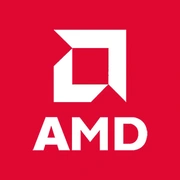AMD Phenom II X4 840

AMD Phenom II X4 840: An Overview of an Obsolete Quad-Core in 2025
Relevance, Capabilities, and Practical Advice for Enthusiasts and Budget Builds
Key Specifications: Propus Architecture and Modest Potential
The AMD Phenom II X4 840 processor, released in 2011, is based on the K10.5 microarchitecture (codename Propus). It is a 45nm chip with four physical cores, lacking support for multithreading (4 cores / 4 threads). Its base clock speed is 3.2 GHz without a turbo mode, and its TDP is 95 watts.
Key Features:
- No Integrated Graphics — The integrated GPU is only available on motherboards with chipsets that support this feature (e.g., AMD 880G). The processor itself does not have graphics.
- Cache: L2 — 512 KB per core, L3 — absent.
- Performance: In the Geekbench 6 (2025) benchmark, it scores 357 points in single-threaded and 1024 points in multi-threaded modes. In comparison, the modern budget Ryzen 3 5300G shows around 1500/4500 points.
The Propus architecture is optimized for multi-threaded tasks but falls behind even the early Intel Core i5 second-generation (Sandy Bridge) processors due to weak IPC (instructions per cycle).
Compatible Motherboards: A Hunt for Rarities
The Phenom II X4 840 uses the AM3 socket. Suitable chipsets include:
- AMD 880G, 785G, 970 — support overclocking (with multipliers) and integrated graphics (in 880G).
- Nvidia nForce 700a — rare boards for enthusiasts.
Choosing Features in 2025:
- No New Boards — Only the used market is available. Prices for used models start at $15 (e.g., ASUS M4A88T-M).
- Check BIOS Support — Some boards require a firmware update to work with Phenom II.
- SATA II and USB 2.0 — limitations on the speed of storage and peripherals.
Supported Memory: Only DDR3
The processor works with DDR3 (up to 1333 MHz officially). Real tests show stability with modules up to 1600 MHz when overclocked.
- Maximum Capacity: 16-32 GB (depending on the motherboard).
- DDR4/DDR5 Not Supported — this is a key limitation for upgrades.
Practical Example:
A combination of Phenom II X4 840 + 16 GB DDR3 1600 MHz + SATA SSD provides acceptable speed for office tasks, but does not eliminate latency in rendering or modern games.
Power Supply Recommendations
With a TDP of 95 watts and no integrated graphics, the minimum power supply requirement depends on the graphics card:
- Integrated Graphics (via chipset): A 300W power supply is sufficient (e.g., EVGA 300 W).
- Discrete Graphics Card like GTX 1650: A 450W power supply (Corsair CX450).
- Powerful GPUs (e.g., RTX 3060): Not recommended — the processor will become a "bottleneck."
Important: Use a power supply with an 80+ Bronze certification or higher. Cheap power supplies may operate unstably under load.
Pros and Cons of the Phenom II X4 840
Pros:
- Cost: A used processor can be found for $10-$20.
- Four Cores — suitable for basic multitasking (browsing, office tasks, older games).
- Compatibility with inexpensive DDR3.
Cons:
- Obsolete Architecture — no support for AVX, AES, or other modern instructions.
- High Power Consumption — 95 watts compared to 35-65 watts for modern equivalents.
- No PCIe 3.0/4.0 — limiting the speed of graphics cards and NVMe.
Usage Scenarios: Where is it Still Relevant?
1. Office PC: Working with documents, browsing, Zoom.
2. Media Center: Playback of Full HD video through VLC or Kodi (with GPU).
3. Retro Gaming: Games from the 2010s (e.g., GTA V on low settings).
4. Entry-Level Server: NAS or home file hosting.
Example: A user assembled a system for $50 (CPU + motherboard + 8 GB DDR3) for working with LibreOffice and browsing YouTube — the result was satisfactory.
Comparison with Competitors
- Intel Core i5-2500K (Sandy Bridge): Better IPC (+25%), supports AVX, overclocks to 4.5 GHz. Used — $25.
- AMD Athlon 3000G (2020): 2 cores/4 threads, Vega 3 GPU, 35 watts. New — $60.
- Intel Celeron G6900 (2023): 2 cores, UHD 710, DDR4. New — $50.
Conclusion: The Phenom II X4 840 lags behind even budget modern CPUs but has an advantage in price on the second-hand market.
Practical Build Recommendations
1. SSD is Essential: Kingston A400 240 GB ($20) will speed up system boot times.
2. Graphics Card: Choose GTX 1050 Ti or Radeon RX 560 to avoid imbalance.
3. Cooling: The stock cooler is adequate, but the Arctic Freezer 7X ($15) will reduce noise.
4. BIOS: Update to the latest version for stability.
Final Conclusion: Who Should Consider the Phenom II X4 840?
This processor is suitable for:
- Enthusiasts building retro PCs.
- Budget builds with minimal requirements (office use, surfing).
- Upgrading old systems on AM3 without replacing the motherboard and memory.
Why Does it Still Have Value in 2025?
At the price of a cup of coffee, it provides access to four cores, which is sufficient for less demanding tasks. However, for gaming, video editing, or AI work, it is hopelessly outdated.
Conclusion: The Phenom II X4 840 is a relic of the past that should only be considered in very limited scenarios. For most users, it’s better to add $30-$50 and get a modern Celeron or Athlon with warranty and support for new technologies.
Basic
CPU Specifications
Memory Specifications
GPU Specifications
Benchmarks
Compared to Other CPU
Share in social media
Or Link To Us
<a href="https://cputronic.com/index.php/cpu/amd-phenom-ii-x4-840" target="_blank">AMD Phenom II X4 840</a>